The Green School
Air Date: Week of September 5, 2014
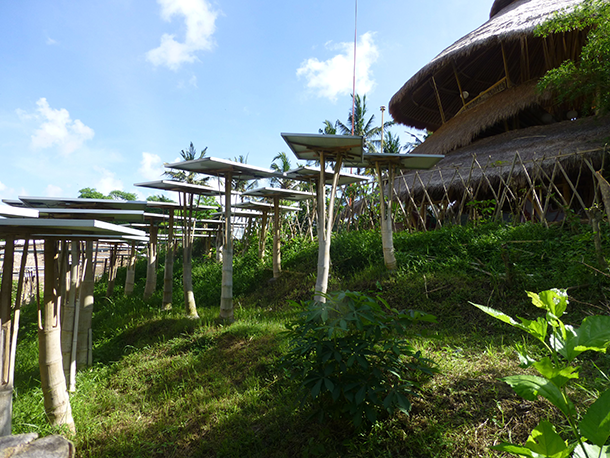
The Green School solar panels are oriented straight up and resemble a forest more than a solar array. (Photo: Mark Fabian)
In Bali, Indonesia, lies the school of dreams for disaffected school children and environmentalists alike. The Green School’s buildings are made of local grass and bamboo. Gardens scattered around campus mimic a natural forest ecosystem, and it’s on track to get 100 percent of its electricity from renewable sources. Living on Earth’s Bobby Bascomb takes us on a visit.
Transcript
CURWOOD: It's Living on Earth. I'm Steve Curwood. Across the U.S., Labor Day is the signal for students to head back to school. It’s also a time of conspicuous spending—with new backpacks and markers, books and a new back to school wardrobe. But on the other side of the world, in the tourist paradise of Bali, there’s a school that the U.S. Green Building Council named the greenest school on Earth for 2012. It’s called the Green School, and it educates some 300 students from 25 different countries. Living on Earth’s Bobby Bascomb went to check out what’s so green about the school, and arrived during a benefit concert.
FRANTI: Thanks for coming out on the first ever day of the Soulshine Festival, making it amazing.
[DRUM BEATS]
BASCOMB: Musician Michael Franti greets an audience of students, parents, and music lovers on the first day of a weekend festival to benefit the Green School in Bali.
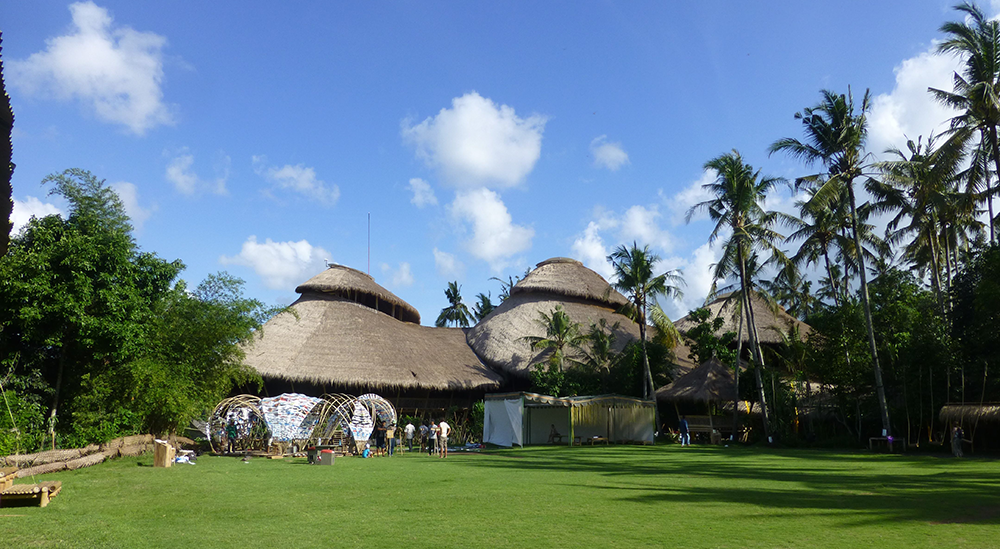
The Green School is located in Bali, Indonesia. (Photo: Mark Fabian)
[MUSIC: “ALL I WANT TO DO IS BE WITH YOU”]
BASCOMB: The Green School offers a K–12 education with all the usual subjects and a strong environmental focus. Tuition is $13,000 per year- far too expensive for most Indonesian students. Franti says the proceeds from the festival will go towards a scholarship fund for local kids.
FRANTI: We want to highlight the great eco-work that they do here. But we want equal opportunity for everyone. So, we want Indonesian kids to be in this school as much as the ex-pat kids.
BASCOMB: The Green School opened in 2008. It was the brainchild of John Hardy, a Canadian jewelry designer who moved to Bali in the 1970s. Years later when Hardy retired, he invested his own money in the school.
FORD: He sold his business and when most people say, “Ok, which yacht should we buy?” He said, “I wanna give back. I want to contribute to the healing of this planet.”

With a $100 donation or more people can receive “bamboo immortality” and have a name or image written on a bamboo pole that supports the heart of school. (Photo: Mark Fabian)
BASCOMB: Charis Ford is Director of Communications for the Green School. He’s tall and thin, wears a checkered shirt, shorts, and flip-flops. On a sunny Balinese morning, he leads a tour of the school as musicians perform sound checks for the festival. On the far side of a wide grassy athletic field lies the main academic building, known as the heart of school. The circular three-story building is built from more than four miles of bamboo poles. From a distance, it looks a bit like a spaceship, a bamboo spaceship.
FORD: Bamboo is extremely strong. I've heard it compared to the strength of iron and steel. It is the fastest-growing plant on Earth. If you're patient and willing to sit there, at a certain point in bamboo’s growth cycle, I think when it's around the bamboo shoot phase; you can actually see it kind of –- eeeeek -- stretching into its adulthood.
BASCOMB: It rains a lot in Bali. Humidity and bugs typically destroy a bamboo structure in about 4 years, but the Green School buildings should survive 20 years or more.
FORD: We use treated bamboo, but it’s been treated with salt essentially. We heat water and we submerge the bamboo poles into the saltwater and it makes the bamboo unpalatable to termites and mold and funguses and other things that would biodegrade the bamboo.
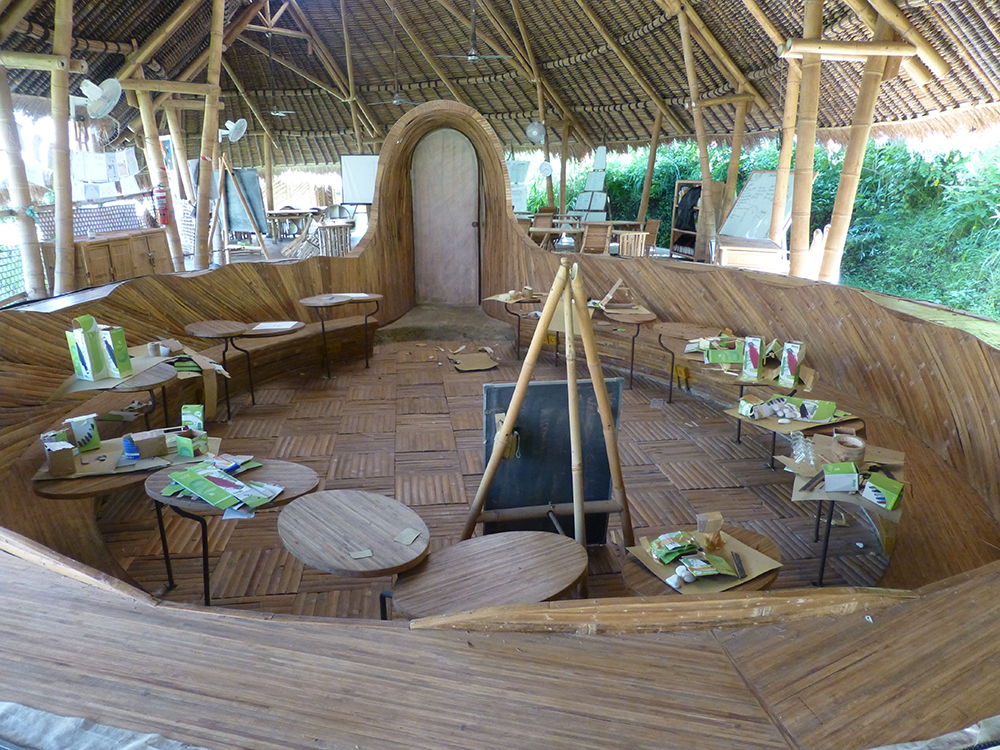
On extremely hot days a canvas envelope can be pulled around a wall-less Green School classroom so cool air can be piped in to keep kids comfortable. (Photo: Mark Fabian)
BASCOMB: Most of the support beams are covered with words like ‘inspire’ and ‘create’. Or names like Ben and Jerry’s.
FORD: Whenever anyone donates $100 or more, they earn what we refer to as “Bamboo immortality,” where they get their name, or a quote, or an image carved into the bamboo posts that hold the building up.
[CLUNKING OF WINDCHIME]
BASCOMB: Some 20 huge bamboo trunks hang from the ceiling. Kids walk through this moving bamboo forest, to create a giant wind chime.
[CLUNKING OF WINDCHIME]
BASCOMB: Bamboo is locally grown and used to make everything: floors, bookshelves, chairs, even bamboo bolts to hold the whole building together. Only the roof is made from something else—that's a local grass called elong elong.
FORD: It is basically like very tall grass that has been cut at about three-feet tall and then they fold it over slats and the slats then become a curtain, if you will. And we layer those curtains one over another on the rafters of the building much like you would tile or shingles, or something like that.
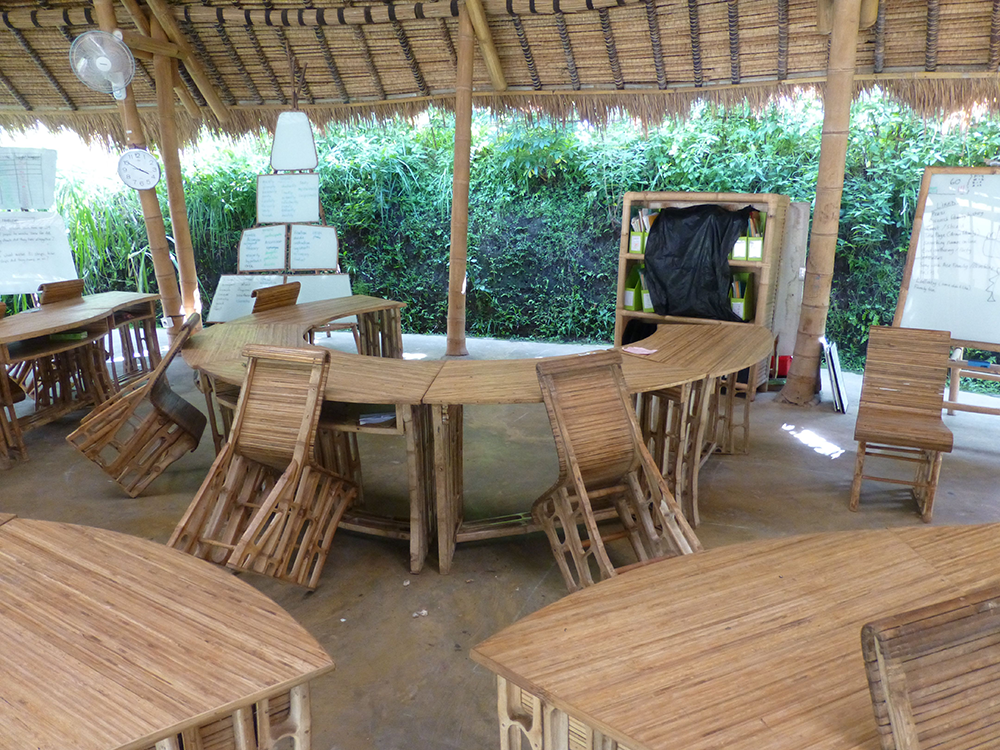
All the furniture at Green School is made from fast-growing bamboo. (Photo: Mark Fabian)
BASCOMB: I've been here a few days now and it poured! I've never seen rain like that, but the thatch holds up?
CHARIS: Yeah! Oh, it holds up! Yeah, I heard from a Balinese man that if you put the elong elong on thick enough it can last up to 20 years, which blew me away. Our roof system is not so thick as that, so we need to replace it from time to time. We find uses for our old roofing. We put it into the paths of our garden, or mulch our garden beds with it, compost with it. So, we end up getting a lot of use out of it.
BASCOMB: From the Heart of School we follow winding dirt paths cut through the grass to check out more of the campus. Charis stops at a photovoltaic set up that looks more like a forest than a solar array.
FORD: The solar panels are set on bamboo poles and they are positioned like you might see leaves scattered on a forest floor instead of all lined up like a row of billboards.
BASCOMB: Bali sits just eight degrees south of the Equator. So solar panels here are angled almost straight up instead of pointing south as they do is the U.S., and it works well. At the moment the Green School gets 70 percent of its energy from solar.
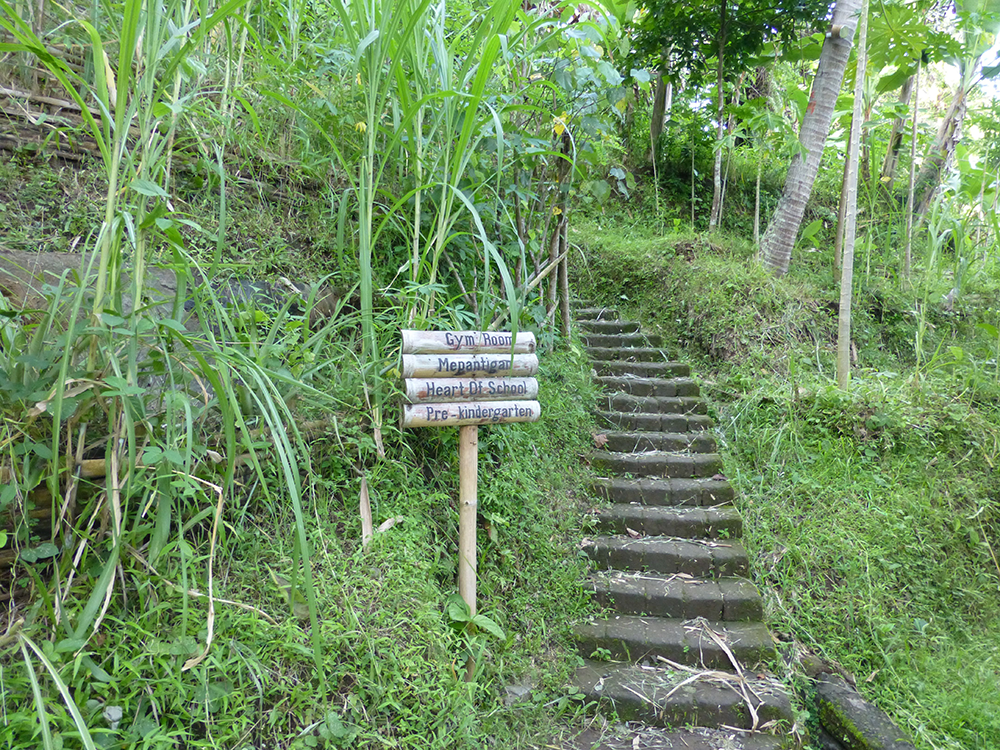
Bamboo signs mark the path. (Photo: Mark Fabian)
FORD: But we are in the process of building our hydroelectric energy generator to the produce the rest of our power.
BASCOMB: It’s called a vortex hydroelectric power generator. Essentially they will divert a small part of the river that runs through the campus and direct it into a round enclosure, some 15 feet deep with a turbine and a drain at the bottom. The vortex harnesses the power of a whirlpool to create a constant source of energy.
FORD: That's going to produce 100 percent of our energy alone. So, we'll be producing an extra 70 percent once the vortex power plant is up and running.
[WALKING SOUNDS]
BASCOMB: Charis leads the way to one of the classrooms, another round bamboo building with a grass roof. But one thing is noticeably missing.
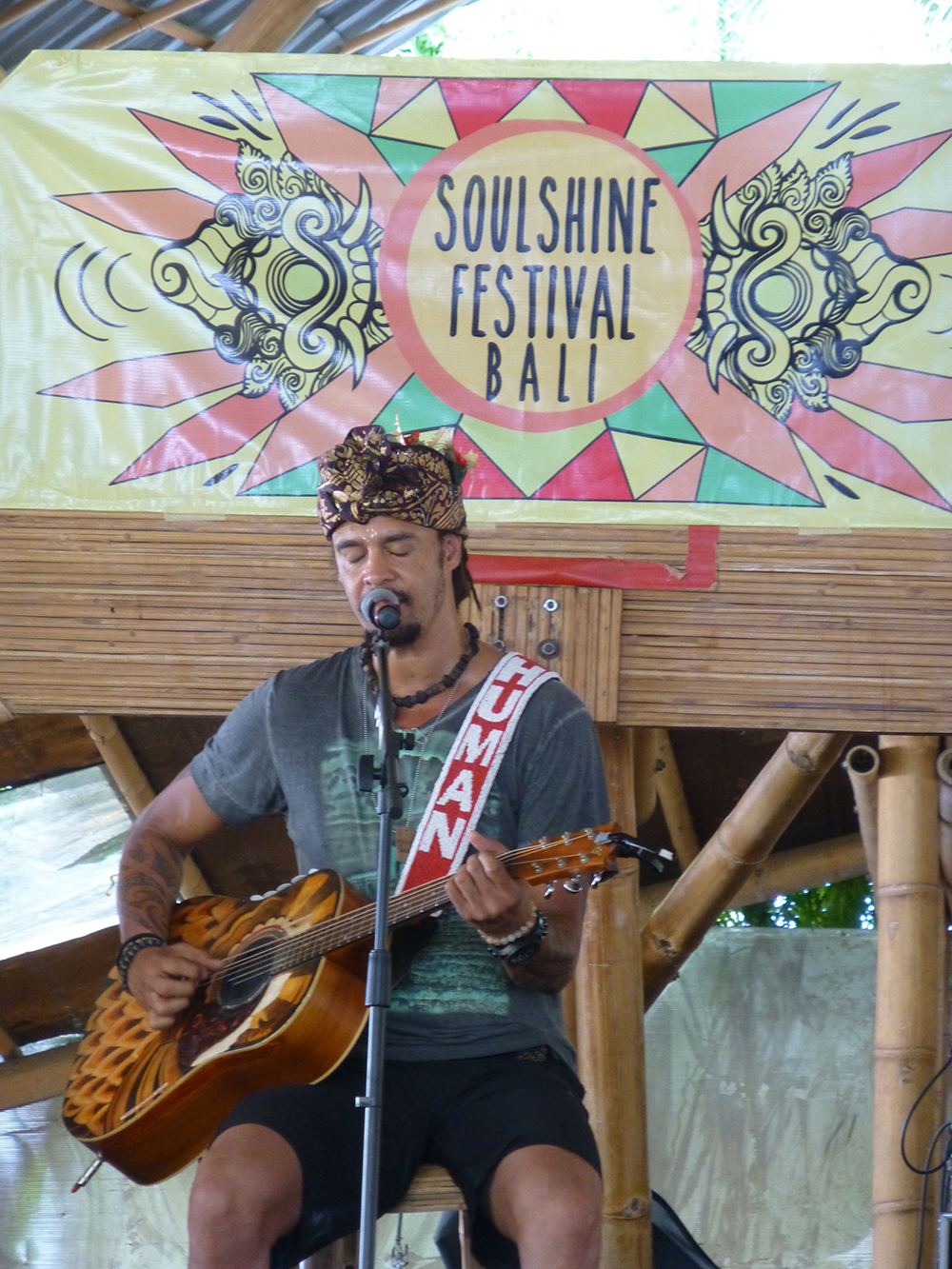
Michael Franti plays for music lovers at the Soulshine Festival. (Photo: Mark Fabian)
FORD: We don't have walls.
BASCOMB: It was part of John Hardy's vision for the school that the classrooms be open, so students can learn while immersed in nature.
FORD: All the building companies that he spoke with were like well, “You have to have walls. All schools have to have walls,” and John said, “Why do they have to have walls?” They rubbed their chins and scratched their heads and said, “Well, where are the kids going to hang the art?” As it turns out, you don’t have to have walls. And we don’t have walls and we’re quite happy about it.
BASCOMB: Just outside the classroom, a chicken wanders through a patch of green beans. Gardens are everywhere, integrated throughout the campus. They mimic a natural forest ecosystem using edible plants, a design called permaculture.
FORD: When you wander around Green School's campus, you might think it looks kind of like it's wild, but then as you tune in and look at the plants that you're around, you'll see that that's a bean trellis, and that's a guava tree, and that's ginger. Even though it looks like a jungle setting, you get a little closer and you see that's chocolate - cacao pods - hanging from a tree next to you.
BASCOMB: All the pupils at the school learn how to grow food as part of the curriculum, including Charis Ford's own two children.
FORD: My fifth grade boy, his class raises the chickens, and they collect the eggs and design the cage. That's their responsibility. My first grader has a garden patch outside of his classroom. He and his classmates weed and harvest and plant, and they bring home armloads of veggies to their families.
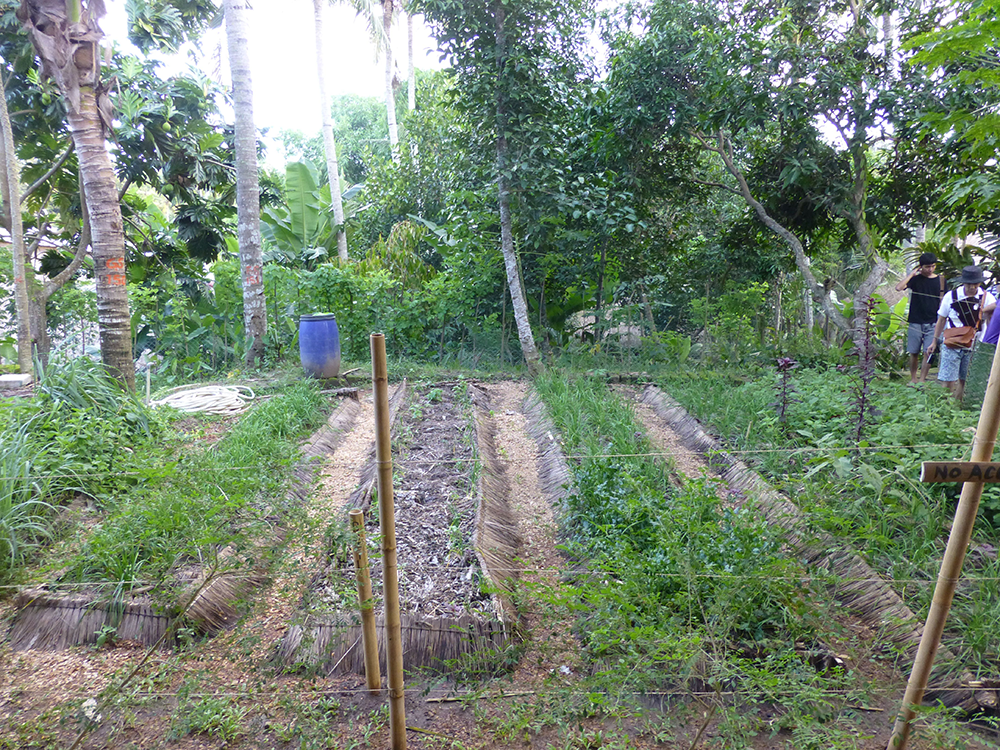
Green School gardens are integrated throughout the campus. (Photo: Mark Fabian)
BASCOMB: Each grade has a different responsibility in the garden. Sixth graders Ben and Chayton say they like getting outside to grow food and being inside to learn.
CHAYTON: The classrooms are nice because, like, there are no walls and everything -- sometimes animals will walk in.
BEN: At Green School, you actually experience what you’re learning. And you, like, go outside and do stuff, I don’t know. If you like math, you measure plants or something, I don’t know. But you go outside, and it’s much better than just getting a textbook and learning out of it.
BASCOMB: Is there anything you don’t like about your school?
BEN: No, no, no. It’s a great school.
BASCOMB: Ben says that, but Chayton looks dubious.
BEN: What?
CHAYTON: Well, I mean. Even Ben… I mean...everyone...most kids, kind of don’t like…I mean, it’s not a problem but still, I don’t really like homework that much. But it’s fine.
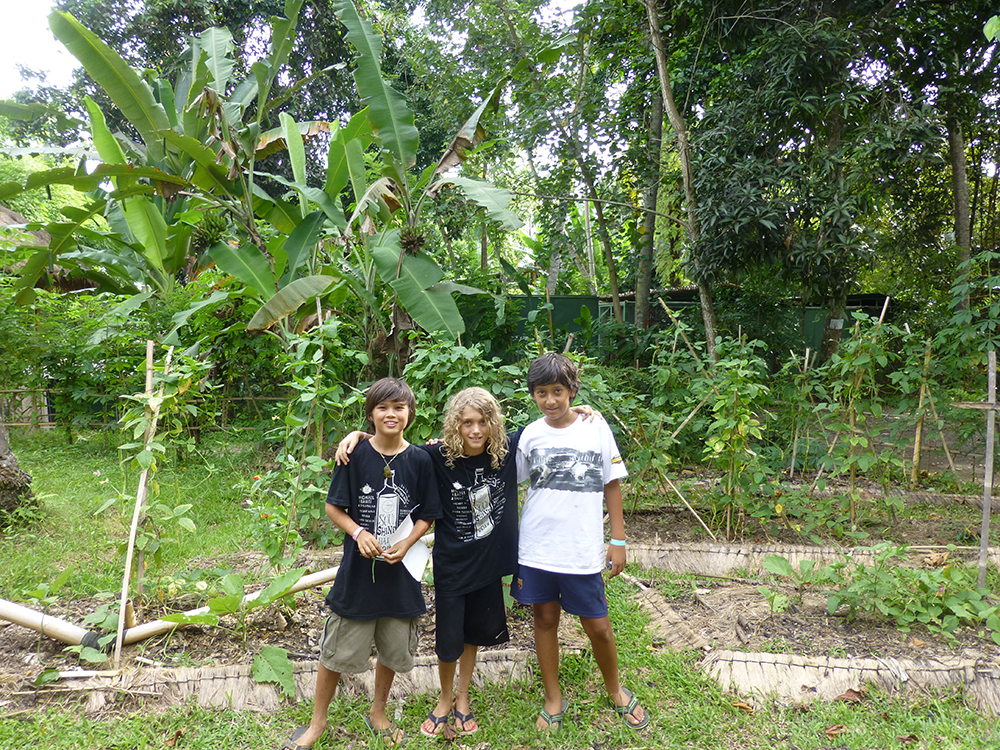
Green School students Ben (left) and Chaytum (center) are enrolled in the Green School. (Photo: Mark Fabian)
BEN: Oh, yes. I don’t like homework.
BASCOMB: It seems some things are just universal. Still, many kids here love the focus on the arts, especially music.
[MUSIC PLAYING]
BASCOMB: Ibu Jan is one of the music teachers here. She’s originally from Hawaii and teaches Zimbabwean marimba.
JAN: It’s beyond my wildest dreams as a teacher to be outdoors, to have children who are focused and open minded to learn new things, in my case learn new music.
BASCOMB: Do you find that the kids are distracted by what’s going on outside, and not paying attention: lack of walls and lack of structure, that sort of thing?
JAN: Yeah, that’s interesting. In the beginning for a lot of students here, you know, there’ll be this big, gorgeous tetrablue butterfly the size of your hand that will just pass through and it does cause a little bit of distraction. But no, I think the subjects are so interesting that they’re pretty riveted by what they’re learning.
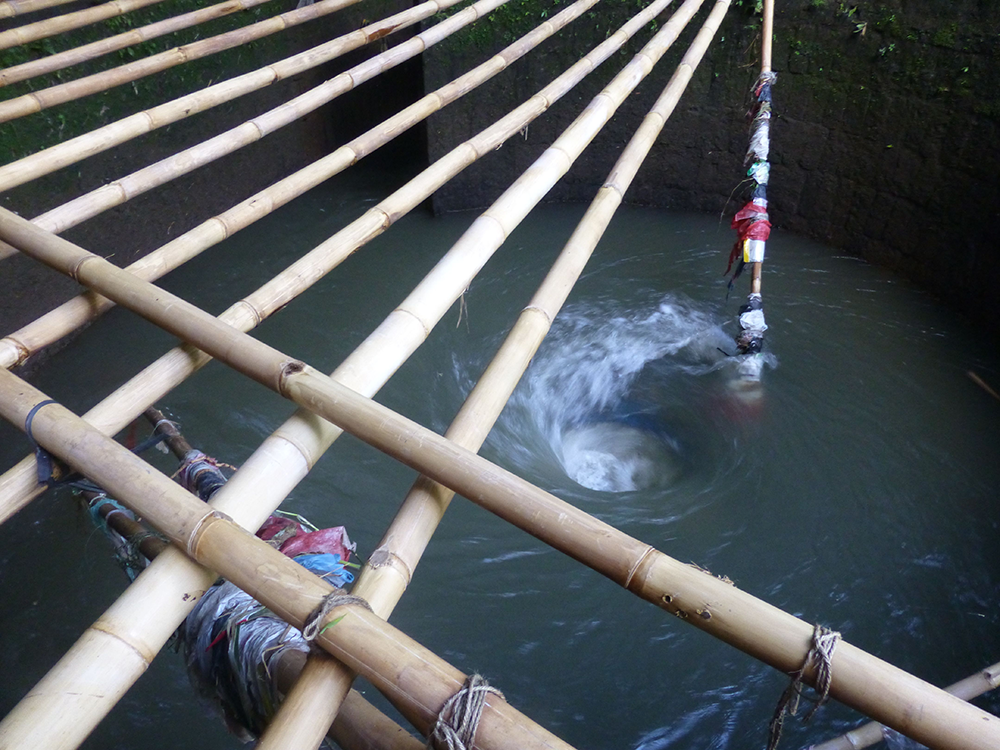
The Green School's hydro vortex will produce 100% of the school's energy needs by harnessing the power of a small river that runs through campus. (Photo: Mark Fabian)
[MARIMBA MUSIC]
BASCOMB: On the second day of the music festival, Ibu Jan takes the stage with a group of her students.
BASCOMB: After their performance, I sat down with the students in the band. Sixteen-year-old Adele Geiten moved here from Germany.
GEITEN: I came here from a pretty normal German state school and found myself in absolute heaven, really. It’s funny, you move to Bali from Germany and you start playing music from Zimbabwe, but that’s sort of how it is here. There’s people from all over the place with all different ideas and cultures and they mix together in a really beautiful way.
BASCOMB: Critics point out that the focus on music and the environment could come at the cost of academics. Art student Kathleen Hamilton is from the U.K.
HAMILTION: My friends that did go to more academic-based schools maybe had to work harder on certain exams so people had to push themselves based on what they wanted to do after, which meant a lot of, like, independent study and guiding ourselves essentially.
BASCOMB: But parents seem to think their kids are getting a good education here. Joanne Gelky has two young children at Green School.
GELKY: My kids are excited to learn and excited to come to school, and they don’t want to come home. They can’t wait for school to start. So, I’m happy with the level of math and English and all that stuff their getting. I’m beyond happy with how excited they are about learning.
BASCOMB: And part of what they are learning at Green School is to take care of the environment. Joanne Gelky’s daughter, Chinoa, wrote a song about polar bears that went viral on YouTube.
[CHILD SINGING]
FORD: That came out of the music class.
BASCOMB: Again, Communications Director, Charis Ford.
FORD: Even if a fraction of these kids get it and can contribute to the awakening, or the reorienting of our value set, you know, where we spend more time thinking about how to protect the planet. That’s what the goal of the school is: to raise and inspire people who want to be green leaders.
BASCOMB: These kids will eventually leave the Green School and possibly Bali, but the parents and teachers hope they’ll remember the lessons they’ve learned and become environmentally-engaged leaders and true global citizens.
[CHILD SINGING “I hope you care about the polar bear. That’s all!”]
BASCOMB: For Living on Earth, I’m Bobby Bascomb at the Green School in Bali.
Links
Living on Earth wants to hear from you!
Living on Earth
62 Calef Highway, Suite 212
Lee, NH 03861
Telephone: 617-287-4121
E-mail: comments@loe.org
Newsletter [Click here]
Donate to Living on Earth!
Living on Earth is an independent media program and relies entirely on contributions from listeners and institutions supporting public service. Please donate now to preserve an independent environmental voice.
NewsletterLiving on Earth offers a weekly delivery of the show's rundown to your mailbox. Sign up for our newsletter today!
 Sailors For The Sea: Be the change you want to sea.
Sailors For The Sea: Be the change you want to sea.
 The Grantham Foundation for the Protection of the Environment: Committed to protecting and improving the health of the global environment.
The Grantham Foundation for the Protection of the Environment: Committed to protecting and improving the health of the global environment.
 Contribute to Living on Earth and receive, as our gift to you, an archival print of one of Mark Seth Lender's extraordinary wildlife photographs. Follow the link to see Mark's current collection of photographs.
Contribute to Living on Earth and receive, as our gift to you, an archival print of one of Mark Seth Lender's extraordinary wildlife photographs. Follow the link to see Mark's current collection of photographs.
 Buy a signed copy of Mark Seth Lender's book Smeagull the Seagull & support Living on Earth
Buy a signed copy of Mark Seth Lender's book Smeagull the Seagull & support Living on Earth

